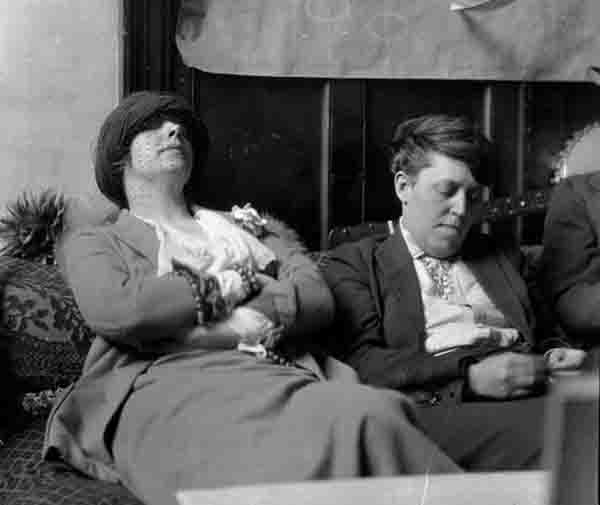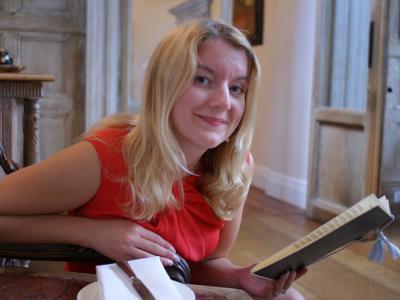More than a muse
Dublin’s Writers’ Museum is a treasure trove of stories and literary artefacts. On a recent visit there, I read the familiar story of how Ulysses was initially published in the journal Little Review, the editors of which were subsequently prosecuted under US obscenity laws. But while the display mentioned the Review’s Ezra Pound, there was a glaring omission. Whatever happened to Jane Heap?
No doubt you have heard of Ezra Pound, and I am not attempting to diminish his role in getting Ulysses out to an audience. But Jane Heap’s name is less familiar. It really shouldn’t be. Editor of the Little Review, Heap was one of the most influential women of the modernist project. Along with her lover and founder of the Little Review, Margaret Anderson, Heap championed the work of Joyce, Gertrude Stein, Hemingway, Scott Fitzgerald, Mina Loy, Djuna Barnes and many, many more writers through the pages of the journal. She was also the author of startlingly interesting and incisive work herself.

In 1918, Heap and Anderson started to serialise Ulysses in Little Review, and continued to do so until they were charged with obscenity in 1921. Facing a fine, Heap told the judge:
“It was the poet, the artist, who discovered love and created the lover, made sex everything that it is beyond a function. It is the Mr Sumners [secretary of the New York Society for the Repression of Vice] who have made it an obscenity.”
Jane Heap and Margaret Anderson are two of the many women who were influential publishers, thinkers, writers and artists during the modernist period that have since been sidelined by history. They are joined by Kay Boyle, Mina Loy, Zelda Fitzgerald, Alice “Kiki” Prin, Janet Flanner, H.D… even the more famous modernist women such as Gertrude Stein, Djuna Barnes and Jean Rhys are not as highly-prized, widely-read and much-published as their male contemporaries. Indeed, they are often still considered primarily in relation to their male colleagues (Hemingway for Stein, Eliot for Barnes) or lovers (Ford Madox Ford for Rhys).
To counter the male dominance of the literary and artistic scene, many of the modernist women living on Paris’s Left Bank in the interwar period formed communities and friendships that supported one another’s work. They read at Natalie Barney’s Academie des Femmes, and published with Bryher (her marriage of convenience husband, Robert McAlmon, ran the Contact Editions press). In her film Paris was a Woman, Greta Schiller suggests that the Left Bank in this period was a place where women could be both artist and muse to one another, by way of mutually supportive friendships and relationships.
But what did it mean for these women to be young, ambitious and female within an avant-garde movement, defined by celebrated and popular men? Was it just the modernist women who formed these communities, or did other women creating art in male-dominated movements also come together to offer mutually-supportive friendships?
This is the question Whitney Chadwick asks in her latest book, The Militant Muse. It tells the experience of women surrealist artists, many of whom were living in Paris during the interwar period, and it examines how these women came together to form supportive friendships and networks. Through their relationships, they found the space to create and devise their own work, at a time when their worth as artists was ignored, sneered at or oppressed by their male colleagues and contemporaries.
Chadwick’s book opens with an interview with Roland Penrose, married to both Lee Miller and Valentine Penrose. Despite his close relationships with these very influential women, Penrose was dismissive of their artistic careers, telling Chadwick:
“You shouldn’t write a book about the women […] they weren’t artists […] they were our muses.”
But for Chadwick, the “muses had become warriors”. As she quotes Leonora Carrington:
“I didn’t have time to be anyone’s muse […] I was too busy learning to be an artist.”
Chadwick looks at five groups of friendships and lesbian relationships between women surrealists: Valentine Penrose and Alice Rahon Paalen; Leonora Carrington and Leonor Fini; Frida Kahlo and Jacqueline Lamba Breton; Claude Cahun, Suzanne Malherbe (who worked as Marcel Moore) and Jacqueline Lamba Breton; and Lee Miller and Valentine Penrose. This represents a potential issue within the book – the risk of blurring sexual lesbian relationships with female friendships. There has been a tendency throughout history to render women’s sexual relationships with other women invisible. Chadwick is categoric about Penrose’s lesbianism, and the lifelong passion between Moore and Cahun. However, we must be careful not to sublimate friendships with lesbian relationships. Labelling this as a book solely about women’s friendships runs the risk of doing so.

Through these relationships, Chadwick explores the difficulties women surrealists faced in being taken seriously as artists of the movement. Breton, the “founder” of surrealism, in particular valorised women as the “femme-enfant” – a childlike, naive creature that inspires rather than creates art. For his wife, Jacqueline Lamba Breton, this view of women meant she felt valued as a muse and not an artist in her own right. A talented and determined painter, when it came to her husband she was simply a “charming accessory”. As Chadwick explains:
“Jacqueline, in her view, was expected to behave as a muse rather than have an active creative existence of her own […] Jacqueline appeared as an object, not a subject, at the Beaux-Arts surrealist exhibition.”
Lamba Breton’s friendship with Frida Kahlo helped her to break out of these restrictions and assert her independence as an artist. The two women were introduced during Breton’s meetings with Trotsky and developed a “lasting friendship based on affinities both professional and deeply personal”. The pair were mutually supportive of one another, with Kahlo’s determination to enter the international art world representing a new model of success to Lamba Breton, and Lamba Breton’s interest in her work a great encouragement to Kahlo.
This principle of mutual encouragement is common to all the friendships discussed in the book. Chadwick describes how for Leonora Carrington’s lover, Max Ernst, the young woman was a “surrealist woman-child, destined to inspire man”. Meanwhile, her friendship with Leonor Fini provided a “process towards creative autonomy”. As with the modernist women, these small communities provided a space to be independent creative artists, rather than muses or mentors to men.
Chadwick explores how these women’s friendships influenced the kind of art they created. For Valentine Penrose, her passionate friendship with Alice Rahon Paalen allowed her to embrace “the power of female desire as a creative principle” as she struggled to “replace the surrealist muse with a new feminine principle”. For Kahlo and Lamba Breton, their friendship “spoke to a growing need on the part of many women artists to claim their own symbolic languages independently of their male colleagues or lovers.”
Again this relates back to the modernist women, who were arguably using language and art to express something peculiarly feminine. In her opus, Women of the Left Bank, Shari Benstock makes the persuasive argument that Stein’s writing is one of coded lesbian sexuality. Meanwhile, writers like Barnes and Rhys told stories centred in a female experience of sex, loss, despair and conflict.
Away from the confines of being a muse and a wife, women were able to develop a feminine creative aesthetic that did not conform to the patriarchal assumptions or constructs of art and literature. It is perhaps for this reason that their work has been sidelined, or under-valued, by a canon defined by white, heterosexual male critics, writers, artists and academics.
The recent exhibition of Claude Cahun’s work in London’s National Portrait Gallery speaks to a growing interest in women surrealists and their contemporaries. Indeed, the thrilling description of Cahun’s and Moore’s artistic anti-Nazi activity in occupied Jersey are some of the most exciting moments in Chadwick’s book. Similarly, a recent retrospective of Carrington’s art in Tate Liverpool, and the reprinting of her short stories by the Silver Press, suggests that more and more people are discovering these artists and wanting to learn about their work.
This is encouraging. As Chadwick’s book testifies, and as the communities of modernist women in 1920s Paris reveal, women were defying the role of muse and getting on with writing, creating, painting and photographing. They did this while living in a sexist culture that dismissed them as creators in their own right. Through building friendships and mutually supportive networks, these women fought back and demanded to be taken seriously. We need to honour and respect those efforts, explore the work of these extraordinary women, and review their work on their own terms – not in relation to the men around them.
And part of celebrating those efforts means remembering who edited the journal that published some of the leading male lights of modernism, surrealism, dadaism et al. She was a woman, and her name was Jane Heap.







